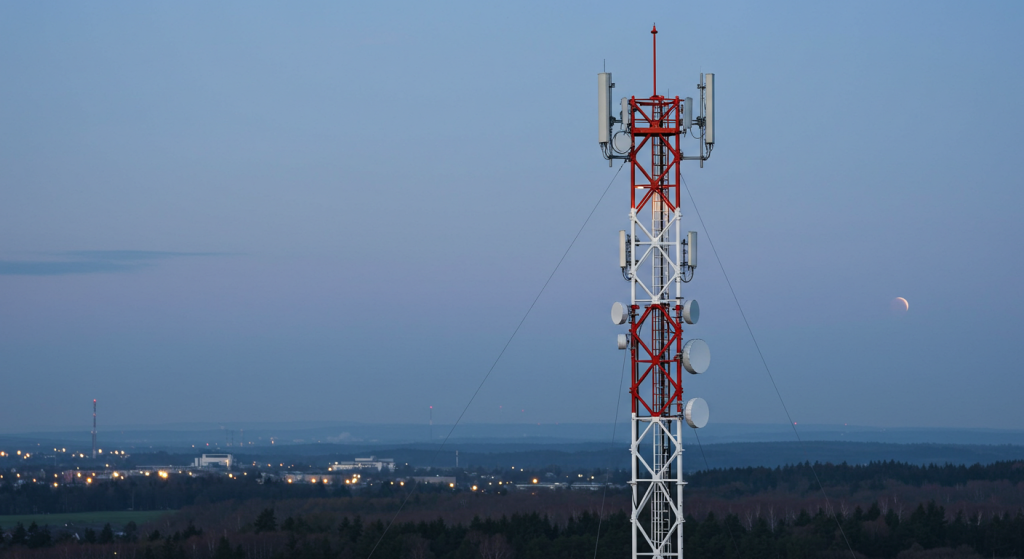Lightweight Telecom Tower| Efficient 5G & Wireless Solutions
2025-05-25
New Telecom Infrastructure with Lightweight Monopole Towers
Business as well as personal activities require the use of enabled tools and devices, and therefore, necessitate modern internet infrastructures. Lightweight monopole tower developed in new M and IoT smart city tiers have become more popular with city developers, municipalities, and telecom companies.
What are Lightweight Monopole Towers?
Monopole towers or communication masts, consisting of lightweight towers, a self-supporting towers made using either tubular steel or aluminum. These are vertical structures meant for the positioning of antennas and other parts of the communication apparatus. Unlike other guyed or lattice traditional towers, they are more efficient in installation as well as zealous deployment because of lower wind load requirements.
Among the most important features of Lightweight Monopole Tower is the ability to:
• Implement 4G and 5G technologies
• IoT infrastructures
• Broadcast
• Emergency Communication Systems
Check out XY Tower for more custom-made cellular tower solutions.
Main Advantages of Monopole Towers
Small City Footprint with a Big Impact
LWTs are ideal for use in urban cell sites. Their compact design subsumes the environmental and site acquisition costs. They can even be placed on roofs or in thick urban areas.
Quick Cell Tower Deployment
From a temporary cell tower set up for an event to a permanent 5G site, lightweight monopoles greatly expedite cell tower setup, saving on labor and time.
Economically Advantageous
These towers serve as ideal telecom cost solutions with reduced foundation requirements and transportation expenses. The design of the steel monopole structure that the towers have carries maximum load at minimal material expense.
Monopole Aesthetics Customizations
City planners appreciate the aesthetic appeal of the steel slimline monopoles.

The Application of Monopoles in Industry
Lighter monopole towers aid the expansion of telecommunication facilities such as 4G LTE and 5G networks. Also, they assist with IoT network towers and public smart city Wi-Fi systems. Finally, they function as broadcast monopole antennas for radio and television.
• Disaster Recovery: Restore communications after an emergency promptly.
• Military and Private Networks: Applicable for Private LTEs in secured zones.
Monopole Materials of Construction
Modern telecommunications monopole towers incorporate modern construction materials to optimize performance, efficiency, and durability:
• Fiberglass/Composite: Employed in construction that requires extreme weight savings.
• Aluminum: Low density and resistant to rust and corrosion.
• Steel: Construction-grade steel of choice due to its durability.
Finishing:
• Hot-dip galvanization is employed for corrosion protection.
Connections:
• Corrosion-resistant flange connection is used in stationary components and monopole structures that will be built in stages.
• Slip-joint connection: Quick to assemble.
Technical Design Considerations
Constructing lightweight towers requires straightforward vertical assembly, as well as thorough planning and streamlined engineering measures.
1. Structural Analysis
• Critical load weighting.
• Wind loading analysis.
2. Increasing Area Coverage and Improving Quality
• Signals must allow for free, unobstructed movement and optimally cover a wide area.
3. Boundaries/Limits and Abstract Uses of the Area of the Soil
• Externally, the limiting boundary area of the soil to be cut will be the smallest.
• A smaller reduction in the size of the foundation footprint will be more beneficial economically and ecologically.
Visit our engineering solutions page for more advanced features and specifications, in addition to tailored standards.
Sustainability & Eco-Friendly
The effect on the environment has always been a key problem. In telecommunication, sustainability goals can be greatly supported via the usage of lightweight monopole towers:
• Less material means lighter carbon footprints.
• Towers placed in strategic zones have less visual pollution for the Protected Areas.
• They can be made out of steel and aluminum, which are good for recycling.
Choosing the Right Tower for Your Needs
When setting up a tower for specific projects, performance, installation simplicity, available space, and cost should be considered. These factors are turning lightweight monopole tower into the standard solution within modern telecom and smart cities.
- Began with stealth monopoles or slim-line monopoles with adequate antenna performance support for urban regions. These are more beneficial for remote rural regions, with rapid deployment towers that offer mobility and reduced equipment requirements.
- The steel monopoles galvanized by hot-dip techniques are ideal because of their high corrosion resistance. However, for temporary or mobile deployments, aluminum or composite monopoles may be more advantageous due to their lower weight.
- Consider the amount of stress each tower will flexibly support, like arms extending, prop arms, and bending at the designated anchor points. Zero the structure's out–of–the–way position for wind load elimination on cell multiplication over the antennas, which is typically needed by 5G and IoT technologies.
Lightweight Monopole Towers for 5G Deployment
The worldwide shift to 5G networks has increased the demand for compact monopole towers. Other noted benefits include:
• Higher antenna density
• Seamless merging within smart city systems.
• Joining forces with private networks and IoT sectors.
Explore more of our cutting-edge technology at: XY Tower 5G Monopoles.
Step-by-Step Explanation of Procedures
Installing a tower is a straightforward method that focuses on rapid deployment alongside safety. The following captures the most relevant steps efficiently:
1. Location Evaluation and Design Calculations
Every installation comes with a detailed location evaluation and design calculations. The process ascertains if the selected location is capable of enduring the load and its wind resistance pedestal, which is TIA/EIA-222 compliant.
2. Site Clearing
Cleansing the site of vegetation, debris, and other structures prepares the region for further construction and extraction.
3. Topographic Mapping
Classifying the physical features of a specified area aids in identifying it.
4. Tower Assembly (Slip Joint or Flange)
No matter the tower model, its fitting parts are individually done first by slip joint tapering and then bolting flanges at the base. These methods allow for rapid Manning and exceptional durability.
5. Secure Mounting of Antennas and Radio Frequency Cables
Antennas and RF coaxial cables, alongside other components, are carefully balanced within their frames and also properly secured. Further care ensures finishes are ground, plugged, and sealed to block moisture for optimal flow.
6. Testing and Commissioning
As a part of the Engineering activities, a system check is performed in the vertical configuration supervised by the technicians, which includes verification of signal levels, electrical ground connection, and the unsealed tower structural system integrity test, and all checks before unsealing the system for operational use have to pass these checks.
Conclusion
Monopole structures are a revolutionary advancement in telecom infrastructures. Their set-and-forget operating features, their no-frills approach to setup and maintenance, and their exceptional value greatly aid the proliferation of wireless communication networks. Whether or if it makes sense to invest in the towers for a 5G network with multiple sites, or installations in remote locations. Learn more about other supplied and offered solutions to telecom at our official webpage.

Hey, I’m Chunjian Shu
"X.Y. Tower: Reliable, innovative solutions for high-quality towers and electrical equipment with professional service.
